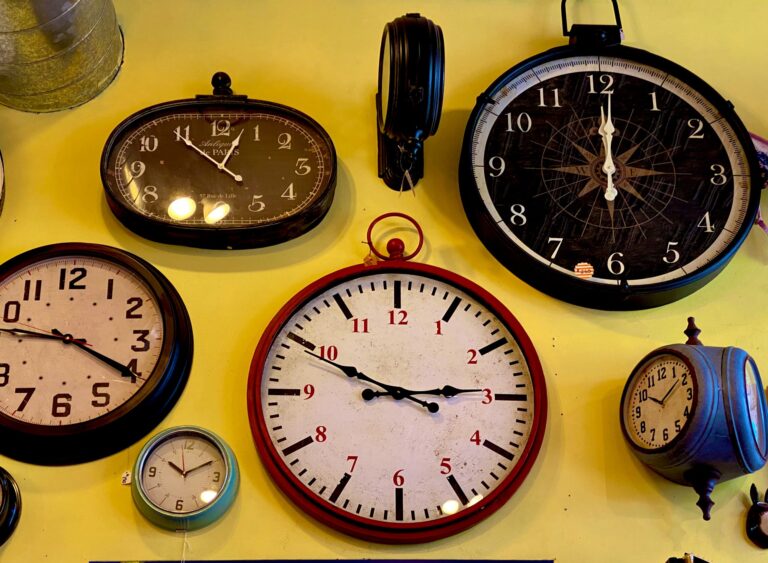7 Effective Ways to Integrate Setting into Your Mystery Story

In the realm of mystery writing, few elements hold as much power as a well-crafted setting. A thoughtfully developed and vividly described location captivates readers, luring them into the intricate web of your story while immersing them in an atmosphere that evokes intrigue and suspense. The foundation of an unforgettable mystery is laid not just through intriguing plot twists and complex characters but also by seamlessly integrating the story’s setting.
The role of setting in a mystery transcends mere aesthetics or background detail. It serves as an essential component of the narrative, enhancing the plot, inspiring the characters’ actions, and eliciting emotion from the reader. This article aims to provide mystery writers with seven effective ways to weave setting into their stories, elevating them from ordinary tales of suspense to extraordinary works of immersive fiction.
- Use the setting to create a sense of place
The first step in integrating setting into your mystery story is establishing a strong sense of place. This allows readers to feel grounded in your fictional world, providing them with a vivid backdrop against which the events of your story unfold.
Description of the physical location
1. Geographic region: Begin by determining the general geographic region where your story takes place, whether it be an urban metropolis or a secluded mountain village. Think about how this decision may influence elements such as climate, local culture, and infrastructure, ensuring that these details remain consistent throughout your story.
2. Architecture and landmarks: Once you have situated your story within a larger region or landscape, focus on the specific locations that serve as the main settings for crucial scenes. Describe buildings, streets, and landmarks in your story with enough detail to give readers a mental image, but avoid overloading them with excessive description. Strike a balance that allows their imagination to fill in the gaps.
Historical context
Delve into the history of your chosen location to lend authenticity and depth to your narrative. Incorporate references to past events, both real and fictional, and by reflecting the enduring repercussions of those events in the present day. Consider how historical events have shaped the social, political, and cultural landscape of your setting, and use these elements to enrich the context of your mystery story.
Flora and fauna
Including the local flora and fauna helps to make your setting more believable and immersive. Describe the plants, trees, and wildlife native to your location, paying close attention to how they change with the seasons or the story’s timeline. Bring the natural environment to life through sensory details, such as the rustle of leaves in the wind or the scent of damp earth after a rainfall, for a more immersive and memorable experience for your readers.
- Use the setting to generate mood and atmosphere
The atmosphere of a mystery story significantly impacts the reader’s experience, and your setting plays a critical role in creating that atmosphere. Bolster the mood and tone of your story by integrating environmental elements that evoke certain emotions and sensations.
Creating tension and suspense using weather conditions
Weather conditions create a sense of foreboding or tension, directly influencing the mood of your story. Imagine a crime scene under heavy rain or an eerie fog engulfing a small town, trapping its inhabitants. Use the weather to your advantage, either to heighten the impending sense of doom or provide an element of contrast to create an unsettling atmosphere.
Utilizing lighting and time of day
The time of day and lighting conditions also impact the overall atmosphere in a mystery story. For instance, a scene taking place during the twilight hours may evoke a sense of unease or uncertainty as darkness encroaches, while a sunny afternoon creates an atmosphere of ironic calm before a storm. Consider the effect of natural or artificial light sources on a scene and how they may cast shadows or create an unsettling ambiance.
Enhance atmosphere through sensory descriptions
To create a truly immersive atmosphere, appeal to your reader’s senses. Describe not just the visual elements of your setting, but also how it sounds, smells, feels, and even tastes. For example, the aroma of freshly brewed coffee in the air evokes a sense of normalcy, while the sudden waft of an unpleasant odor may alert the protagonist – and the reader – of a hidden danger or sinister presence. A rich sensory environment will draw your reader into the story and heighten their emotional investment.
- Incorporate the socio-cultural context to add depth to your story
A well-developed socio-cultural context adds complexity and realism to your mystery story, while also contributing to the development of your characters and the progression of your plot. Exploring your chosen location’s customs, traditions, and societal norms offers many opportunities, bringing your story to life and enhancing the reader’s experience.
Local customs and traditions
Traditions and customs contribute to the overall atmosphere of your setting, serving as the face of a community’s values and beliefs. Integrate local customs into your story through events, celebrations, rituals, or your characters’ interactions. Delve into how these traditions function within your setting, how they shape your characters’ experiences, and how they may impact the course of your mystery.
Language and dialect
The language and dialect of a character or community can be a defining element. Showcasing regional dialects and idiomatic expressions roots your story in a specific location and provides authenticity and depth to your characters’ voices. Be mindful of balancing dialect usage, ensuring it remains accessible and comprehensible to your readers while enriching their reading experience.
Social norms, values, and beliefs
Each location has its own social norms and values that influence your characters’ actions, reactions, and choices. Develop the societal and cultural background of your setting, and explore how the characters navigate these rules and expectations, whether they adhere to or defy them. Examine the influence of societal norms on your mystery’s events, and how they shape character motives, contribute to conflict, or hinder the protagonist’s journey.
- Integrate the setting with your characters
The setting of a mystery story actively contributes to the development and growth of your characters. By incorporating aspects of the setting into their backgrounds and motivations, you create a more cohesive and interconnected narrative in which characters are believably a part of their world.
How the setting influences your characters’ backgrounds and motives
A character’s upbringing, social status, and past experiences within a specific setting shape who they are and influence their goals and motivations. For example, a detective who grew up in a rough neighborhood may have a personal connection to a case involving gang violence, while a character who experienced a life-altering event due to a local custom or celebration may have a unique perspective in a mystery. Explore the ways in which characters are molded by their environment, and ensure that their motives feel grounded in the context of the setting.
The effect of the setting on characters’ appearances, attitudes, and behaviors
The environment in which characters live and work impacts their physical appearance, choice of clothing, and even their mannerisms. Consider how characters’ attire or personal style may reflect regional trends or local climate, and how their upbringing in the setting may influence their demeanor or habits. Small details also convey a deeper sense of the character, such as a character who habitually wears an overcoat due to living in a rain-soaked city or one who prefers a particular local food as their comfort meal.
Character relationships within the local community
Consider how your characters’ lives intersect and interact with the wider community within your setting. In a small, tight-knit village, relationships may be deeply intertwined, while a bustling metropolis may foster anonymity and isolation. Examine how these community dynamics shape the interactions between characters, either as allies or adversaries, as well as how they impact communication and dissemination of information. These considerations will help create a richer, more interwoven narrative that gives your characters a sense of belonging in the story world.
- Use the setting to advance the plot
The setting plays a role in driving your mystery story’s plot forward. By incorporating specific elements of the setting into the chain of events, you create a more cohesive and engaging narrative that feels grounded in its environment.
The role of the setting in shaping the story’s conflict and drama
The setting may offer natural or man-made obstacles that influence the trajectory of your mystery, creating conflict and drama. These environmental challenges may force your characters to confront their personal fears, adapt to unfamiliar circumstances, or race against the clock to solve the mystery. For example, a detective chasing a suspect through a dark, winding alleyway may face unexpected dead-ends or dangerous terrain, complicating their pursuit.
Setting as a facilitator for clues and red herrings
In a mystery story, the setting serves as an abundant source of clues and red herrings. Locational elements such as a unique piece of local artwork, unusual geological features, or even specific community traditions become essential parts of the puzzles and mysteries your characters must unravel. Additionally, setting-related clues lead the reader – and the characters – down the path of false assumptions, creating suspense and intrigue.
The impact of the setting on the story’s climax and resolution
The setting may contribute to the climactic events and resolution of your mystery. A distinctive aspect of the setting could be central to the unmasking of the villain, or it could provide a fitting backdrop for the story’s ultimate showdown. Additionally, the socio-cultural context of the setting may determine how justice is served or how the protagonist grapples with the consequences of their actions in the resolution. Utilize the features and unique characteristics of the setting to create a satisfying and memorable conclusion to your mystery story.
- Foreshadow events through the setting
The setting of your mystery story serves as a subtle instrument for foreshadowing important events and revelations, raising questions in the reader’s mind and heightening anticipation for the story’s key moments.
Planting subtle hints and clues using the environment
Cleverly placed hints within the details of the setting draw the reader’s attention without explicitly revealing the story’s secrets. For example, the presence of a seemingly insignificant object hidden in plain sight, or a unique environmental feature mentioned in passing, become vital components of later plot developments. Planting these clues within the setting descriptions allows your reader to make connections and predictions before the story unfolds, piquing their curiosity and intrigue.
Using elements of the setting as a metaphor for the story’s theme
The setting also serves as a metaphor or symbol for the central themes of your mystery story. For instance, an abandoned, decaying building may represent the secrets that have long been hidden and left to fester, while a setting continually shrouded in fog evokes a sense of uncertainty or confusion surrounding the truth. Utilizing these metaphorical elements foreshadows the story’s thematic resolution or the protagonist’s journey toward understanding.
By incorporating subtle and thematic foreshadowing elements within the setting, you create a layered and multifaceted story that invites the reader to delve deeper into the narrative, unearthing hidden meanings and connections that enrich their reading experience.
- Leverage setting-specific details to create realistic and relatable settings
Realistic and accurate details related to your story’s setting foster believability and support the reader’s ability to form a genuine connection with the world you have created. Ensuring these details are consistent and authentic throughout the story demonstrates a commitment to craftsmanship and enriches the narrative.
Conducting thorough research to provide an authentic backdrop
Research is essential to crafting a believable setting for your mystery story. Investigate your chosen location’s geography, history, customs, and other relevant facets to ensure that the story remains grounded in reality. When writing about real-world locations, consult maps, historical documents, or travel guides to better understand the area, and consider speaking with locals to gain insights that may not be readily available through traditional research.
Weaving in local customs, policies, or historical events to create a more believable world
Incorporating elements such as local customs, policies, and historical events adds depth and color to your setting and strengthens the connection between the reader and the story. By weaving these details into your narrative, you create a more immersive and genuine experience for your audience. However, be mindful of striking a balance to avoid inundating the reader with excessive information that detracts from the central mystery and plot.
Ensuring setting elements remain consistent throughout the story
Consistency is key when integrating setting details into your mystery story. Establish a coherent sense of place by maintaining continuity in descriptions of the environment, weather, and other relevant factors. Inconsistencies pull readers out of the story, so ensuring your setting remains true to its initial vision will strengthen the narrative.
By paying close attention to these setting-specific details and ensuring their authenticity and consistency, you will create a captivating and convincing backdrop for your mystery story, bringing your fictional world to life and inviting your readers to fully engage with your narrative.
The Mystery of Your Detective’s World
By weaving elements of the setting throughout all aspects of the narrative, from character development to plot progression, you create a cohesive and believable world for your characters to inhabit and your readers to explore.
The importance of leveraging setting in mystery stories cannot be overstated. As a mystery writer, you have the opportunity to experiment with different ways of incorporating setting into your work, utilizing the physical location, atmosphere, socio-cultural context, character-setting relationships, plot advancement, foreshadowing, and realistic setting-specific details to create a
fascinating, complex, and memorable reading experience.
Embrace the challenge of bringing your setting to life and witness how it enhances and complements your mystery story, creating a work of fiction that lingers in the minds and imaginations of your readers.




